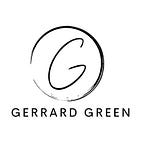5 Useful Tips on how to Write a Good Resume
An honest resume is not only your ticket to the dream job but also a document that indirectly tells something about your character and personality. If you decide to write a resume full of meaningless phrases, with grammatical errors, you reduce your chances of success. Just follow these five tips and your resume can be the reason for your dream career!
1. Follow the structure of your CV
The primary purpose of a resume is to introduce, who you are, what you know, and what you have achieved in life (of course, state only the information that interests a particular employer). The most ideal choice is a structured CV, as its brevity and conciseness are exactly the features of the text that will exclude you from a pile of classic or fictionalized CVs. A good resume should include the following information:
Personal data: check its accuracy several times; when entering an email address, it is preferred not to use addresses of the type thegamer123@mail.com, rather create a more serious email address; do not write personal information about which the employer has no right to know (sexual orientation, political beliefs, marital status …).
Education: state the highest level of education, do not forget the full name of the school and the field of study studied; if your diploma thesis was related to the job you are applying for, be sure to mention it in your CV; list any training, courses or seminars you have attended that are relevant to the position; the knowledge you have acquired through self-study may also be worth mentioning.
Work experience: briefly and clearly describe all the jobs you have changed (if there were too many, the last three will suffice); If some of your previous job positions relate in any way to the job you are currently applying for, describe them in detail - job description, company name, year of employment, year of departure.
Language skills: tell the truth about the languages you speak and especially at what levels, as it may happen that the HR specialist will surprise you in the selection process with advanced English (because you had it mentioned in your CV) and you will defend yourself at the level with your hands. beginner.
Other information — includes computer knowledge; driving license; your qualities (pros and cons); hobby; references from your previous supervisor; It is a great advantage to attach a motivation letter to your CV, which you will sell to a specific employer.
If you want to follow the best practice you can use templates and make the CV online in a few minutes by using the online resume builders. We strongly recommend using make-cv.com for its simplicity and additional options like sharing online via links and others.
2. Photography
The presence of a photograph in the CV has its cons and pros. If it is requested directly from the employer, you must have it. However, the photo can establish a more personal relationship with HR before you get to the interview. So if you decide to attach a photo to your CV, make sure it is not provocative or vulgar. Don’t use vacation photos where you are not completely dressed. It is not necessary to show the whole body, just a smiling face. Remember, however, that photography does not make a good resume!
You can read more about all the benefits of a CV in the blog post of one of the best online resume builders.
3. Curriculum vitae attachments
It is necessary to attach a personal data form to the CV attachments, so that no one may send your personal data to other persons without your consent. If you want, write exactly who is allowed and for how long. An advantageous appendix is a motivation letter, which must be prepared directly for the position. In it, you convince the employer that you are the most suitable candidate for the job position. Other attachments can be your diplomas or various documents, on the basis of which they can easily identify you.
The most used attachment for a CV is a Cover letter, if you want to create it now, visit the page and choose one of the free templates in Cover letter builder.
4. The most common mistakes
- Curriculum vitae length — ideally one to two A4 pages.
- Grammatical errors (a good CV must be flawless), overly formal language, use of phrases (I am reliable, hardworking …).
- Complicated form of resume — complex words and sentences difficult to understand.
- Sending the same resume to multiple employers — don’t do it. If you really care about the position, prepare a resume separately for each company. Not only will this increase your chances of success, but you will show your true interest.
- Excessive originality — the advantage of an original approach to creating a resume is the fact that it pulls you out of the crowd of resumes written according to a template. However, do not overdo it with it so that it does not have the opposite effect.
5. What doesn’t belong in a good resume
The CV does not include information about your marital status, sexual orientation, religious beliefs, your origin, race, nationality, your health status, whether you are pregnant, or your private information (credit card number, birth number …).
If you enjoyed this article, you might also like:
